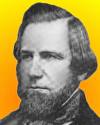
On 12 May 1803, William Howe was born, the American inventor of the Howe Truss for bridges widely used for decades by the expanding railroads of his time.
He was born in the same house in Spencer, Mass., as Tyler Howe, who invented bed springs, and Elias Howe who, after great persistence, devised an early sewing machine. Quite an inventive New England family!
Which is the title of a 1909 article in Munsey’s Magazine, which begins by introducing the Bemis part of their family tree, which included inventive men from whom the Howe's seem to have inherited the creative trait.
Today's feature is the first part of the article about this Inventive New England Family, which provides a short biography for the William Howe and the Bemises. It links to the remainder of the article so later you can read about Tyler, and especially Elias, who is perhaps the best known of the three.

On 12 May 1910, Dorothy Hodgkin was born, an English chemist who was awarded the 1964 Nobel Prize for her discoveries, by the use of X-ray techniques, of the structure of biologically important molecules, including penicillin (1946), vitamin B-12 (1956), and later, the protein hormone insulin (1969). Today's book pick is: Dorothy Hodgkin: A Life (P), by Georgina Ferry, who provides a warm, balanced, carefully researched biography.
While the context of this book is the development of crystallography, during the initial three decades of its application to organic structures, the focus of the book is simply Dorothy herself the person how she started life, how she worked her way into a scientific career, battled against the odds that were stacked against women in those days.
It is available from Amazon, typically about New from $40.00. Used from $6.50. (As of earlier time of writing - subject to change.)
 | … I became captivated by the edifices chemists had raised through experiment and imagination—but still I had a lurking question. Would it not be better if one could really “see” whether molecules as complicated as the sterols, or strychnine were just as experiment suggested? |
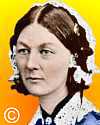 | To understand God's thoughts, one must study statistics, for these are the measure of His purpose. |
 | I am almost thanking God that I was never educated, for it seems to me that 999 of those who are so, expensively and laboriously, have lost all before they arrive at my age—& remain like Swift's Stulbruggs—cut and dry for life, making no use of their earlier-gained treasures:—whereas, I seem to be on the threshold of knowledge. |
| Before you look at today's web page, see if you can answer some of these questions about the events that happened on this day. Some of the names are very familiar. Others will likely stump you. Tickle your curiosity with these questions, then check your answers on today's web page. | |
| Births | |
 | Dorothy Hodgkin, born 12 May 1910, was an English chemist. She was a crystallographer of distinction, and by the use of X-ray techniques, she determined the structure of biologically important molecules. For her discoveries, she was awarded the Nobel Prize for Chemistry. In which decade was she awarded the Nobel Prize for Chemistry? |
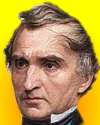 | A German chemist born on 12 May 1803 is most often remembered by the name of a design of distillation condenser he invented. Yet he made many important contributions to the early systematization of organic chemistry, to the application of chemistry to biology (biochemistry), to chemical education, and to the basic principles of agricultural chemistry. What is the name of this chemist? |
| Deaths | |
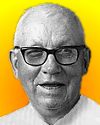 | Roy J. Plunkett (1910-1994) was an American chemist who died leaving the world PTFE which he discovered by accident while working for DuPont. The trade name for this polymer is now so widely known, it has even been used satirically to describe an American President. Can you give the full chemical name, and the common name for this polymer? |
| Events | |
 | In 1936 a patent was issued for a new typewriter keyboard layout designed to maximize efficiency by placing common letters on the home row, and make the stronger fingers of the hands do most of the work. By contrast, the original QWERTY layout was designed for the earlier, less efficient typewriters. Previously, speed would result in two type bars hitting each other in their travel, so the original keyboard was laid out to reduce collisions. What is the name of this new keyboard layout? |
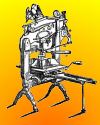 | In 1816, the Columbian Press, the first printing press invented in America, was designed by George E. Clymer in Philadelphia, Pa. The iron horizontal platen hand-printing press used a system of compound levers to multiply the pull of the operator, replacing the iron screw previously used for downward pressure. A counterweight lifted the platen back after the pressman’s “pull”. Perhaps because it was the first such press invented in America, the counterweight was cast in a distinctive shape. What was the shape of the counterweight which identifies this press? |
Fast answers for the previous newsletter for May 11: linotype - typesetting machine • Harriet Quimby • a machine in which germinating seeds could be subjected to centrifugal force in either horizontal or vertical position • air pump • Siam.
 If you enjoy this newsletter, the website, or wish to offer encouragement or ideas, please send feedback by using your mail reader Reply button.
If you enjoy this newsletter, the website, or wish to offer encouragement or ideas, please send feedback by using your mail reader Reply button. Your click on a Facebook, StumbleUpon, or other social button on the site webpages is also a welcome sign of appreciation. Thank you for using them.
© This newsletter is copyright 2020 by todayinsci.com. Please respect the Webmaster's wishes and do not put copies online of the Newsletter — or any Today in Science History webpage. (If you already have done so, please remove them. Thank you.) Offline use in education is encouraged such as a printout on a bulletin board, or projected for classroom viewing. Online, descriptive links to our pages are welcomed, as these will provide a reader with the most recent revisions, additions and/or corrections of a webpage. For any other copyright questions, please contact the Webmaster by using your mail reader Reply button.
--
If you do not want to receive any more newsletters, Unsubscribe
To update your preferences and to unsubscribe visit this link
Executive Real Estate Business Class
-
"It was like a man with wings. It wasn't like anything you'd see on TV or in a monster movie." ...
About the publisher
Search This Blog
Blog Archive
-
▼
2021
(585)
-
▼
May
(62)
- Tonight: Back-to-Back Premieres
- On This Day for May 31 - Adolf Eichmann hanged, Cl...
- Newsletter for Monday 31 May.
- On This Day for May 30 - Joan of Arc burned at the...
- TONIGHT at 8/7c: The Tulsa Race Massacre Revealed
- Newsletter for Sunday 30 May.
- Bundle Up For The Summer!
- On This Day for May 29 - Mount Everest summit reac...
- Newsletter for Saturday 29 May.
- On This Day for May 28 - Amnesty International fou...
- Newsletter for Friday 28 May.
- On This Day for May 27 - Founding of St. Petersbur...
- Newsletter for Thursday 27 May.
- On This Day for May 26 - Martin Luther declared a ...
- Newsletter for Wednesday 26 May.
- On This Day for May 25 - U.S. Constitutional Conve...
- Newsletter for Tuesday 25 May.
- Behind Every Empire There’s a Titan
- On This Day for May 24 - Opening of the Brooklyn B...
- On This Day for May 23 - Tibet annexed by China, C...
- Newsletter for Sunday 23 May.
- The Tulsa Race Massacre, 100 Years Later
- On This Day for May 22 - Roman Emperor Constantine...
- Newsletter for Saturday 22 May.
- On This Day for May 21 - First nonstop solo transa...
- Newsletter for Friday 21 May.
- On This Day for May 20 - U.S. Homestead Act signed...
- Newsletter for Thursday 20 May.
- On This Day for May 19 - Ringling Bros. Circus for...
- Newsletter for Wednesday 19 May.
- Learning This Fun Doesn't Need A Summer Break
- On This Day for May 18 - Eruption of Mount St. Hel...
- Newsletter for Tuesday 18 May.
- On This Day for May 17 - School segregation outlaw...
- Newsletter for Monday 17 May.
- Follow the trail of 400 facts!
- On This Day for May 16 - Warsaw Ghetto Uprising su...
- Newsletter for Sunday 16 May.
- On This Day for May 15 - Edith Cresson appointed F...
- Newsletter for Saturday 15 May.
- On This Day for May 14 - Declaration of Israel's s...
- Newsletter for Friday 14 May.
- On This Day for May 13 - U.S. declaration of war o...
- Newsletter for Thursday 13 May.
- Ridiculous History You Want To Know About!
- On This Day for May 12 - First flight over the Nor...
- Newsletter for Wednesday 12 May.
- On This Day for May 11 - “New Rome” established by...
- Newsletter for Tuesday 11 May.
- On This Day for May 10 - Nelson Mandela inaugurate...
- Newsletter for Monday 10 May.
- On This Day for May 9 - Fourth and final voyage of...
- On This Day for May 7 - Theatre Royal opened, Pyot...
- On This Day for May 5 - Mexican victory in the Bat...
- On This Day for May 4 - Four students shot at Kent...
- On This Day for May 3 - Margaret Thatcher elected ...
- Newsletter for Monday 3 May.
- TONIGHT: The Bin Laden Raid, Revealed
- On This Day for May 2 - Lou Gehrig's 2,130-game st...
- Newsletter for Sunday 2 May.
- On This Day for May 1 - May Day founded, Arthur We...
- Newsletter for Saturday 1 May.
-
▼
May
(62)
-
Blogroll
-
About
HistoryFact










0 comments:
Post a Comment